Arts 1303 Exam 2 Review
1/49
There's no tags or description
Looks like no tags are added yet.
Name | Mastery | Learn | Test | Matching | Spaced |
|---|
No study sessions yet.
50 Terms
Etruscan art and iconography had a great influence on which culture?
Roman culture
Compare and contrast the lives of Etruscan women to the lives of Greek women.
Etruscan women enjoyed more freedom than Greek women. They attended public events like banquets, could own property, and were often literate, while Greek women were mostly secluded in the home.
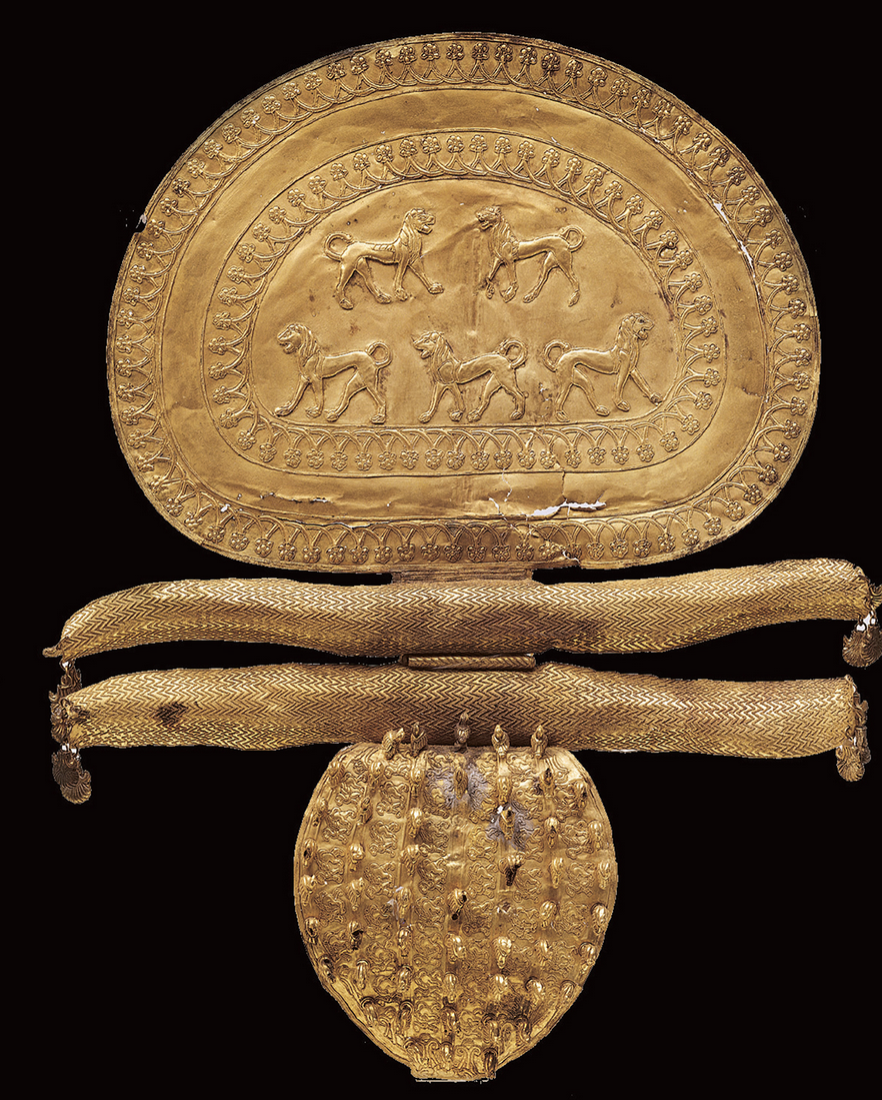
What is the function of this object, called a fibula?
a clasp or pin used to fasten clothing
Features of Etruscan columns
Made of wood, having an unfluted shaft, and possessing a base. They are most similar to the Greek Doric order and are sometimes called the Tuscan order.
What tomb type appears in the Etruscan cemetery at Cerveteri?
Tumulus tombs, which are large, round earthen mounds
Which body parts tend to be overlarge and pronounced in Etruscan tomb paintings?
The hands are often overlarge and pronounced in Etruscan tomb paintings.
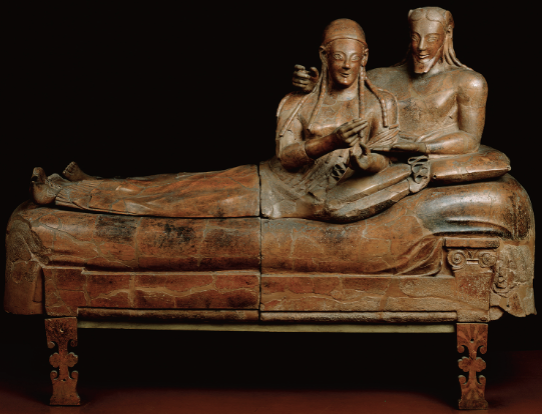
What is the material of the sarcophagus with reclining couple (Fig. 6-5)?
The sarcophagus with the reclining couple is made of painted terracotta (a type of ceramic clay)
Where did Etruscans commonly place their architectural sculptures?
typically on the roofs of their temples
Etruscan temples have columns closest to which Greek order?
Greek Doric order, share similar characteristics like a sturdy, simple design, and often a lack of a base for the columns to rest on.
What material is the Chimera of Arezzo made of?
Bronze
What is the large structure in Rome where the gladiators fought called?
The Colosseum in Rome
Which structural material made it possible for Roman architects to create colossal structures?
The use of concrete; a durable and versatile mixture of volcanic ash, lime, and aggregate; provided unprecedented strength and flexibility.
Why did the Roman state persecute the Christians?
They refused to worship the Roman gods and the emperor, which was viewed as defiance to the state.
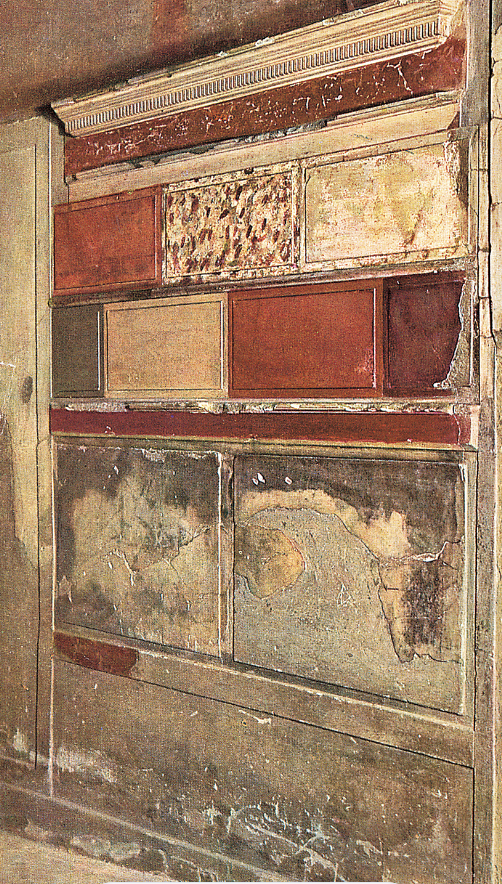
Roman Mural Painting First Style
Painted and molded stucco reliefs made to look like costly marble panels.
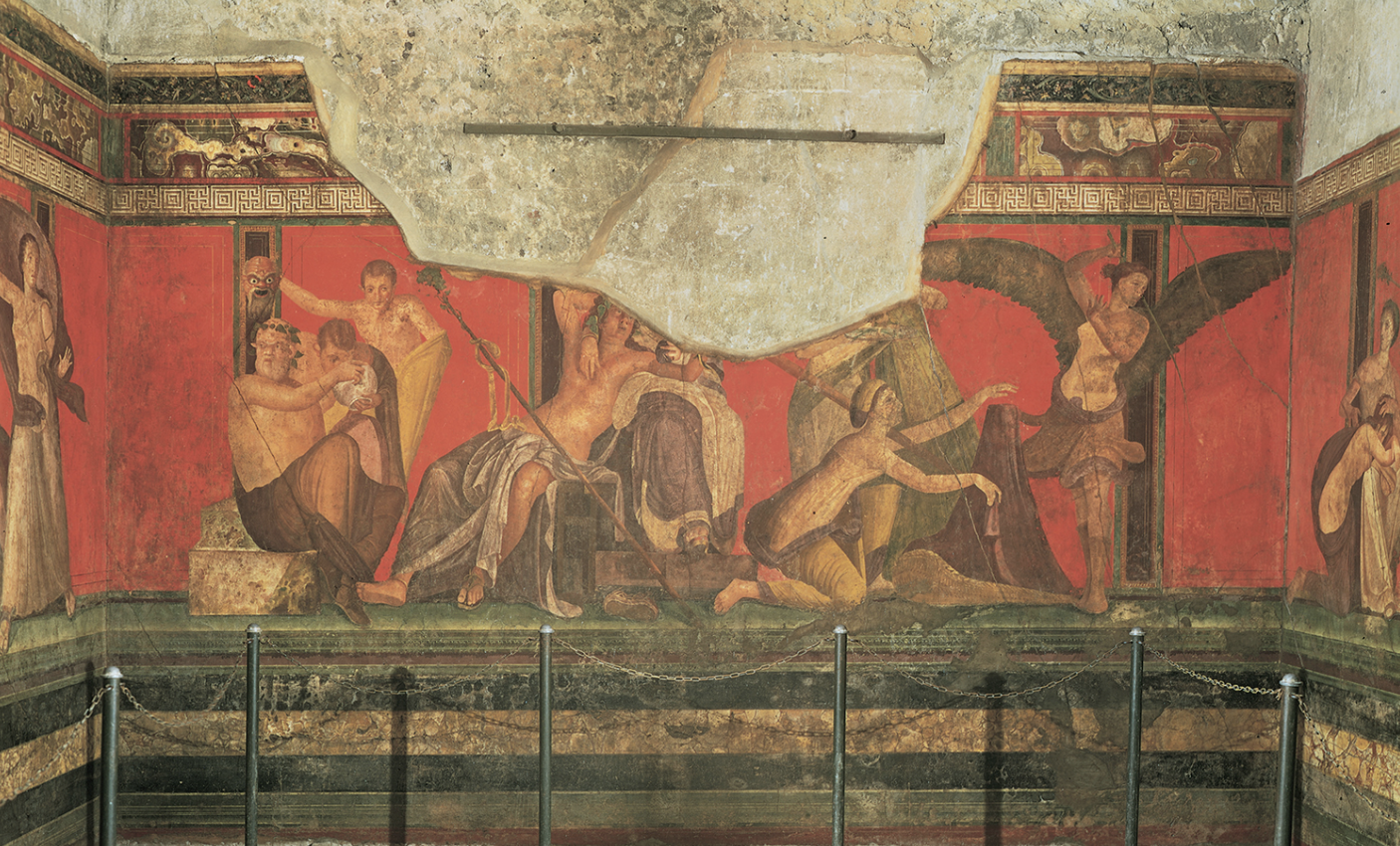
Roman Mural Painting Second Style
Created illusionistic scenes of worlds beyond the walls, like landscapes or mythological scenes.
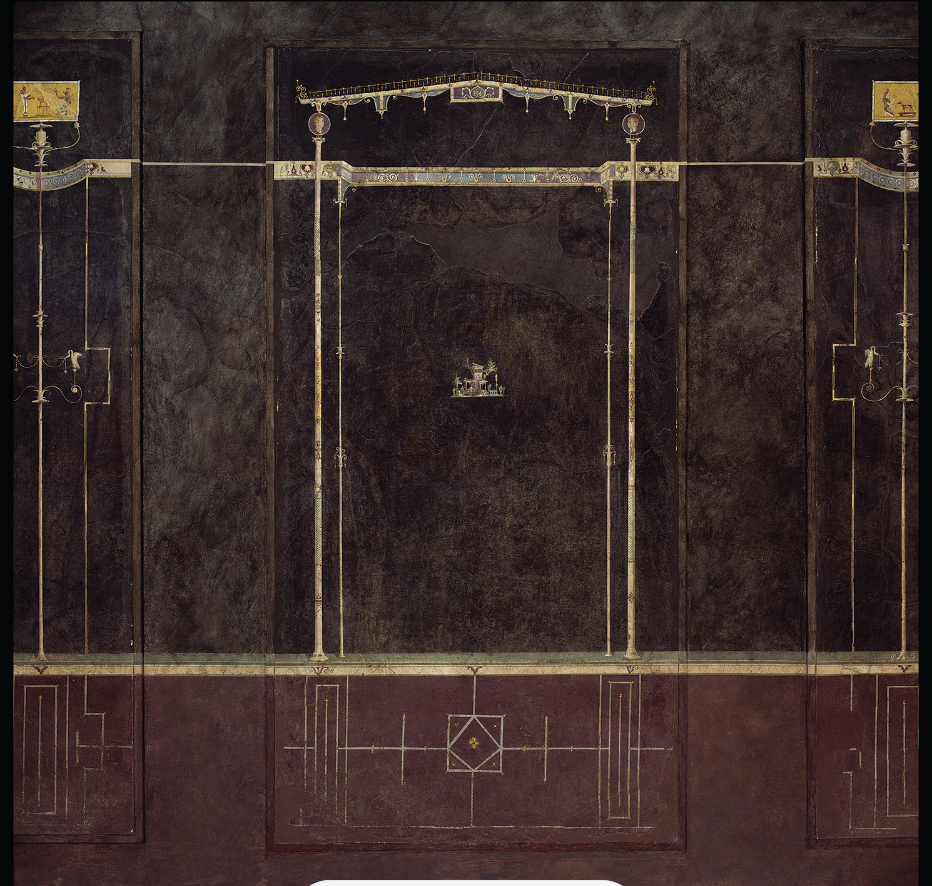
Roman Mural Painting Third Style
Characterized by delicate, small, monochromatic paintings on large, flat backgrounds.
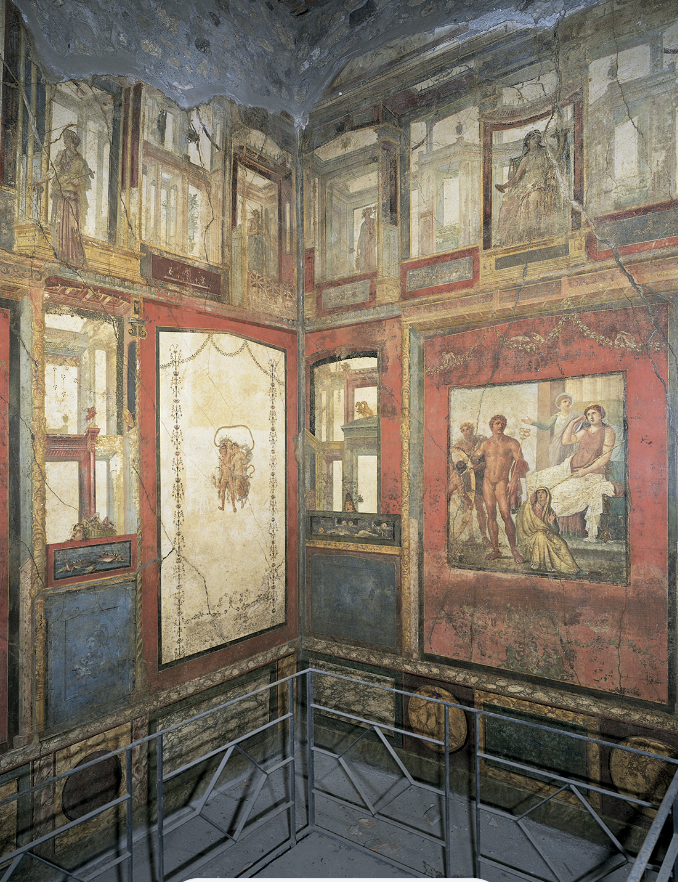
Roman Mural Painting Fourth Style
A combination of the previous three styles, often seen as a "gallery" of different paintings on one wall.
Define the encaustic technique.
A painting method where pigments are mixed with hot wax.
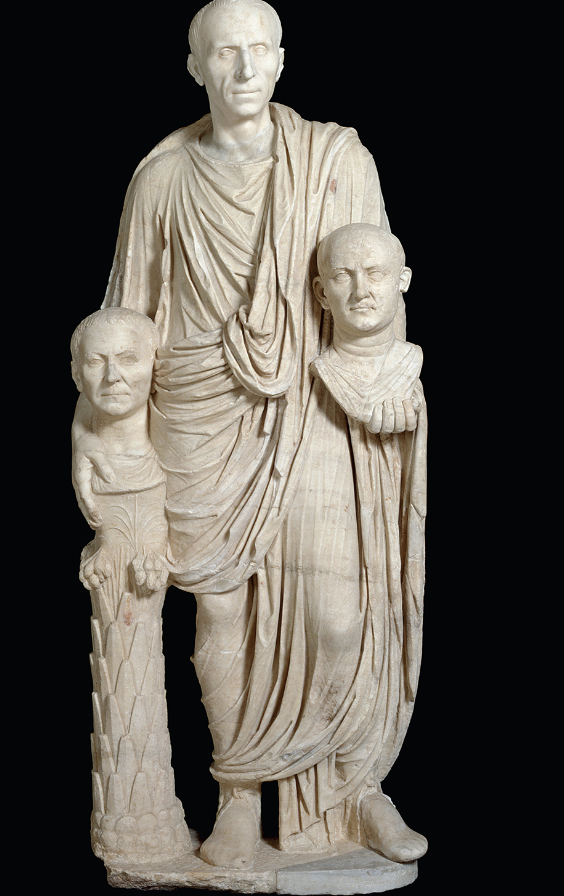
Be familiar with Fig. 7-7 (Man with portrait busts of his ancestors).
This sculpture shows a Roman patrician holding busts of his ancestors, emphasizing the importance of family lineage. The style is veristic, or hyperrealistic.
What are the names of the legendary figures credited with the founding of Rome?
Romulus and Remus.
What subject matter do the works (Fig.8-6) and (Fig.8-7) have in common?
Depict Christ as the Good Shepherd.
Define monotheism.
The belief in only one god.
An artwork consisting of two panels, usually with hinges, is known as a(n) _________.
A diptych
Define the term “prefiguration”.
The depiction of Old Testament figures and events as forerunners or prophecies of New Testament events.
Artworks made of tile decorating building structures are called ________.
Mosaics
What was the purpose of the Edict of Milan?
Issued by Emperor Constantine, it ended the persecution of Christians and legalized Christianity in the Roman Empire.
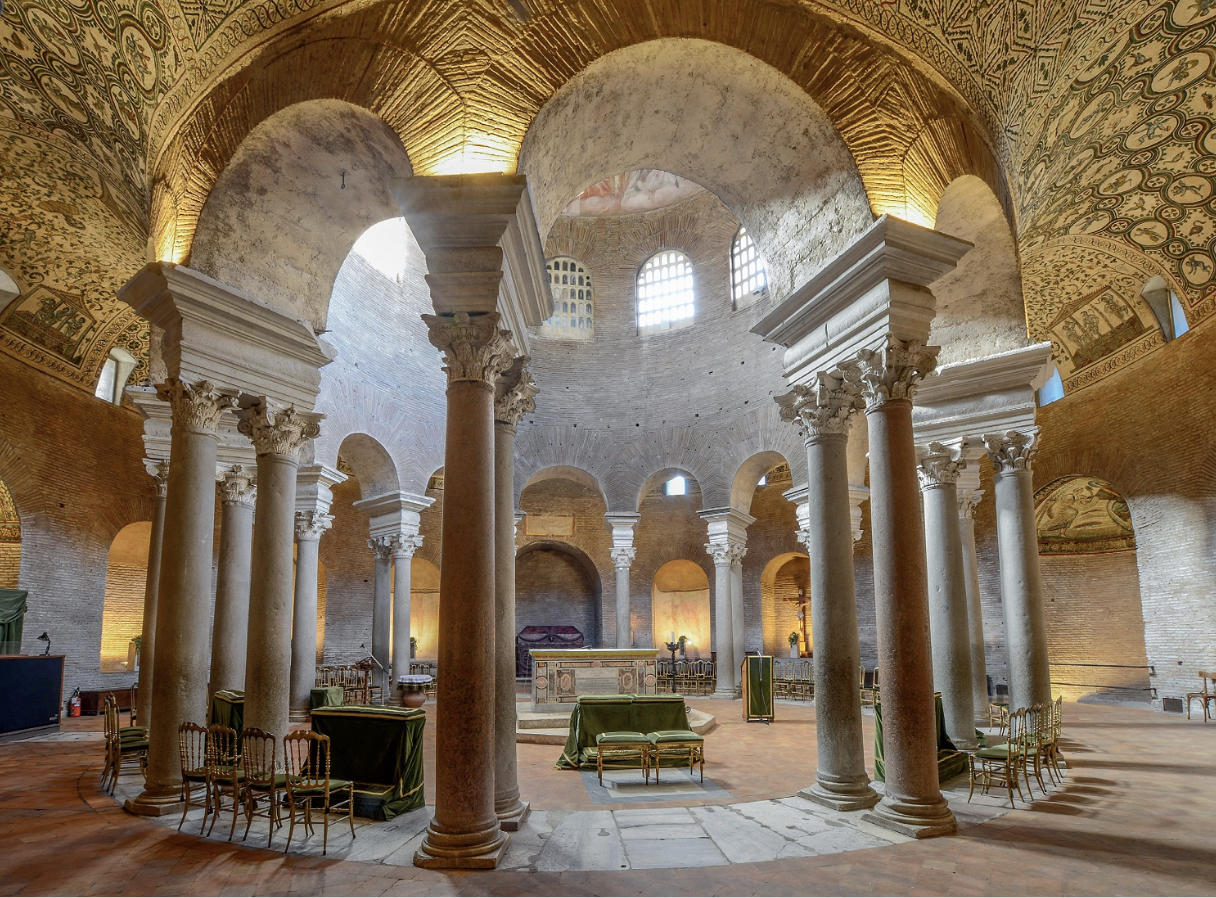
What is the Christian interpretation of these vineyard scenes from Santa Costanza? (Fig.8-11)
These scenes are a Christian reference to the Eucharist, where wine symbolizes the blood of Christ.
In what role was Christ depicted in much Early Christian art?
Christ was often shown as the Good Shepherd or as a youthful teacher/philosopher.
What was the color associated with the Roman emperor?
Purple
Subterranean chambers designed as cemeteries for the burial of the dead are known as
Catacombs
What is the role of Christ in his image as Pantokrator?
Christ is shown as the all-powerful ruler and judge of the universe.
What event in Byzantine history accounts for the loss of much art?
During the period of Iconoclasm, the destruction of religious images.
What architectural component supports the dome of the Hagia Sophia?
The dome is supported by pendentives—triangular segments of a sphere that transition from a square base to a round dome.
The overlapping of the figures of Justinian and the bishop in the mosaic at San Vitale is meant as a reference to what? (Fig.9-13)
The overlap of Emperor Justinian and the bishop symbolizes the balance of power between the church and the state.
What biblical figure, known for receiving the Ten Commandments, is most closely associated with the monastery at Mt. Sinai?
Moses, who received the Ten Commandments there.
Which city remained the Byzantine foothold in Italy for two centuries?
Ravenna was the main Byzantine stronghold in Italy.
Which city was laid to waste during the Fourth Crusade?
Constantinople
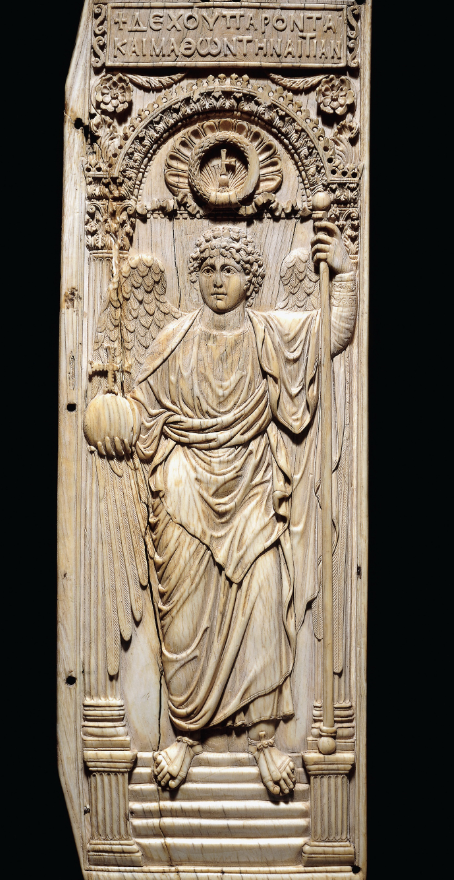
What is the material of this artwork depicting Archangel Michael? (Fig. 9-2)
This diptych panel is carved from ivory.
What term describes the depiction of the same figure more than once in the same space at different stages of a story?
Continuous narrative is the term for showing the same figure multiple times in one image to tell a story.
Be familiar with monasteries. What are they and where are they usually located?
are communities where monks live a life devoted to God. They are typically located in remote or isolated places to avoid worldly temptation.
What structure do Muslims gather to pray in?
Mosque
What religious text does Islam follow?
The holy book of Islam is the Qur'an (or Koran).
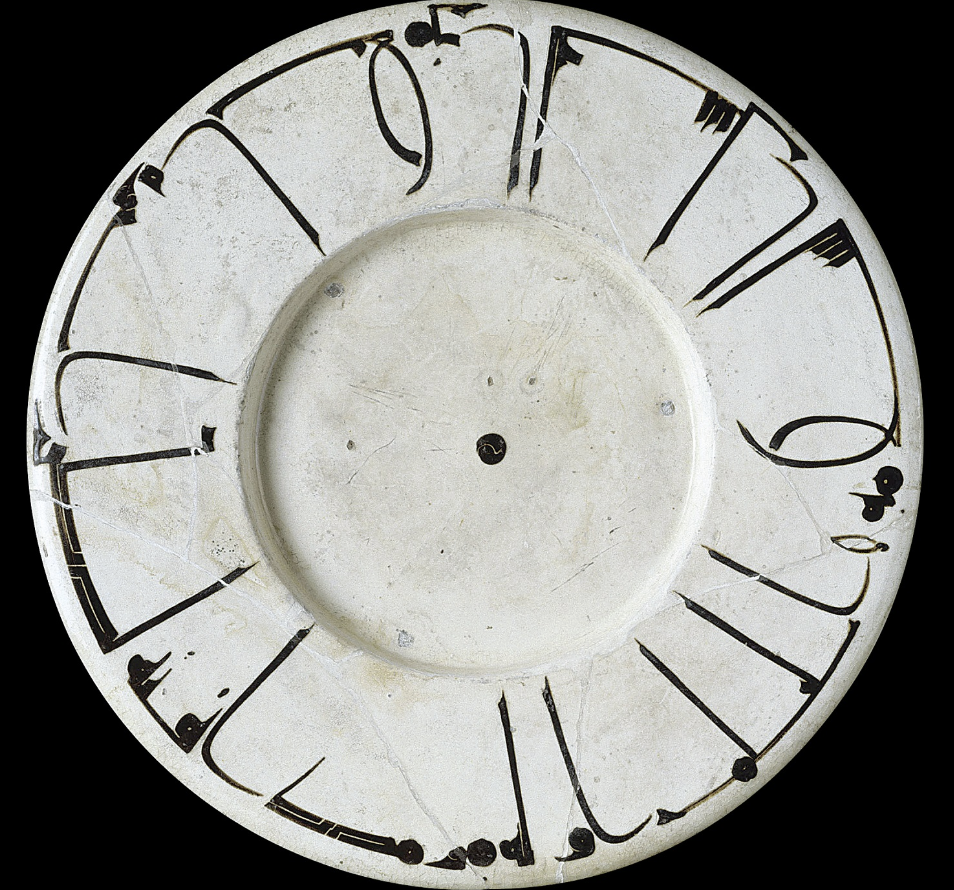
What forms the decoration of this Samarqand ware plate? (Fig. 10-21)
The plate is decorated with Kufic calligraphy, an early, angular form of Arabic script.
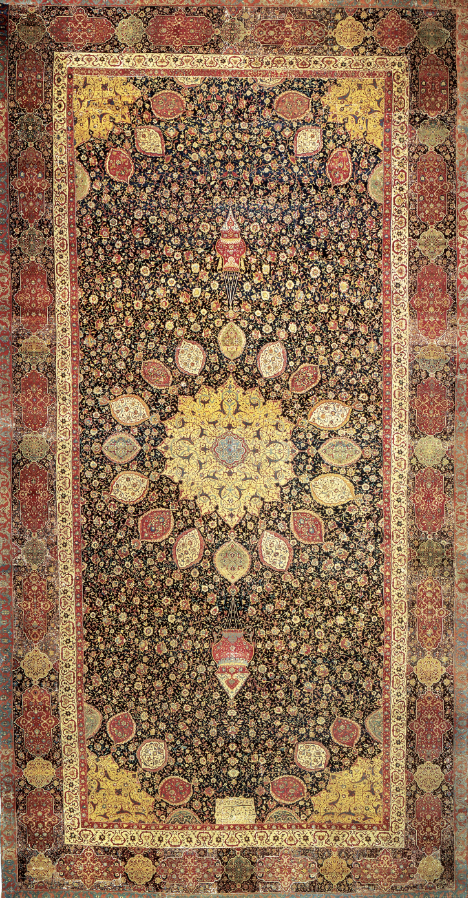
Be familiar with the features of the Ardabil carpet. (Fig. 10-31)
It is a very large and detailed Persian carpet made of wool, featuring a central medallion, two hanging mosque lamps of different sizes, and a border with floral patterns and calligraphy.
Define the standard features of the mihrab.
A niche in the qibla wall that points towards Mecca.
Define the standard features of the Mihrab dome.
A dome placed over the area in front of the mihrab to emphasize its importance.
Define the standard features of the Hypostyle Hall.
A large prayer hall filled with columns.
Define the standard features of the minaret.
A tall tower from which the call to prayer is announced.
The basic features and design of mosques are meant to resemble what?
Prophet Muhammad's house in Medina.
Located in Jerusalem, what is the name of the building that is built on a site that is sacred to Muslims, Christians, and Jews?
The Dome of the Rock